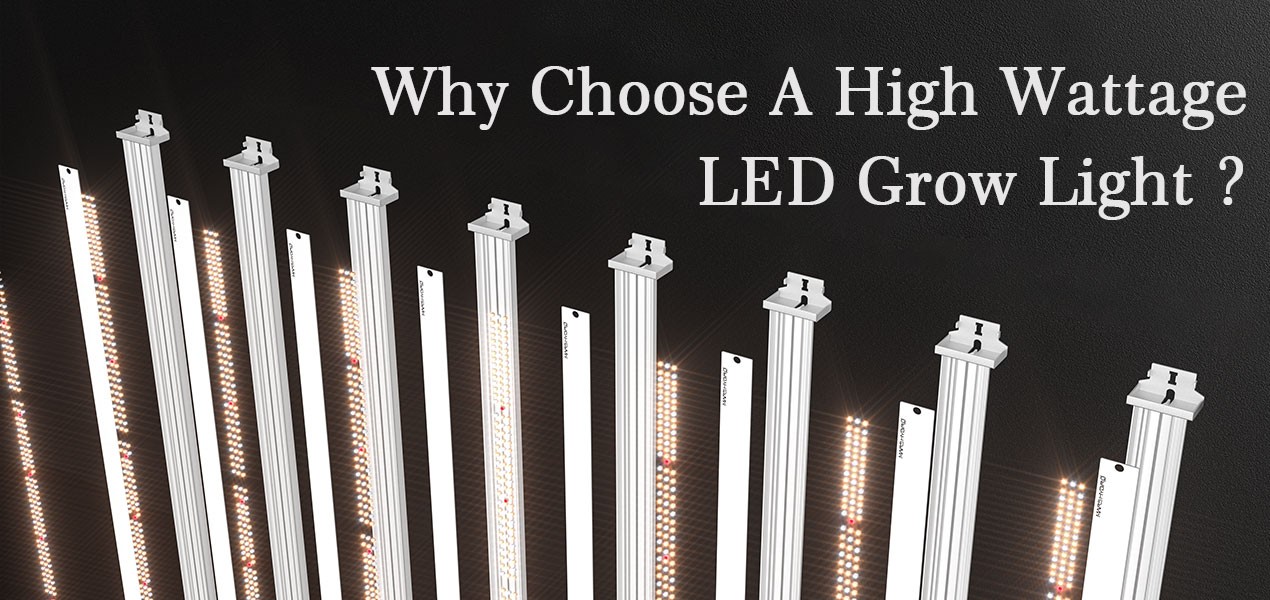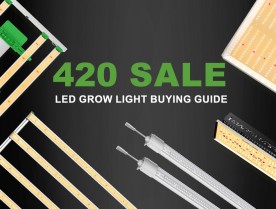
In order to achieve higher yields, growers will choose a more efficient light when growing. How can you tell if a light is efficient? Does a high wattage LED grow light mean higher efficiency? Or the higher the lumens, the higher the efficiency? There are many factors that affect the efficiency of light, such as wattage, chip, heat dissipation, and so on. Today we will focus on the impact of wattage on LEDs.
What Does Wattage Mean for LED?
Is lumen or wattage the way to measure LED efficiency? We can find the answer by comparing LED to HPS. HPS was widely used in supplemental lighting before LED became popular, and one way to measure it’s efficiency is to look at its lumens. The higher the value of lumens, the higher the efficiency. When it comes to LED, lumens cannot be used as an important condition to measure efficiency, but only the brightness that can be seen.
As we all know, LED emits a specific spectrum to promote photosynthesis in plants, which cannot be seen through the eyes, hence it has little to do with lumens. After that, how should we measure LED grow lights? The efficiency of the light can be measured by the total wattage of the LED grow light. When the wattage of the led is higher, the greater the intensity of light, which also indicates more power.
For example, a 150 watt LED grow light can provide 400-700 μmol/m²/s of PPFD, while an 800 watt LED grow light can provide PPFD in the range of 1000-1600 μmol/m²/s.

The Benefits of High Wattage Light
Growers who have grown plants know that plants like a lot of light, and they use the energy produced by light to power the growth of their buds. And using a high wattage LED gives you the ability to produce greater yields during the growing process. That's why it's important to choose a high wattage light.
Another reason is that using high wattage lights brings more than just high yields, it provides an important environment for adding CO2. The CO2 levels can affect photosynthesis. When the CO2 level is below 200ppm or above 1800ppm, it is not good for your plant growth. When CO2 levels are between 800-1200ppm, it accelerates plants growth and increases plants production. Remember, without light, plants cannot absorb CO2. Only when the light intensity is at 1000-1500umol/s can it work with CO2 to promote plant growth and increase plant production. A low wattage light will not provide a quality PPFD, only a high wattage light will give out the PPFD value needed to meet the needs of the plants in a CO2 environment.
Please do not forget that when you increase the CO2 level, you need to adjust the temperature of the grow room. Generally speaking, the ideal temperature range for CO2 absorption is between 75°F and 80°F.
Mars Hydro LED Grow Light- Best for CO2 Cultivation
If you want a high-efficiency light, Mars Hydro's new FC8000 and FC-E8000 are the best choices for you. Their chips, PPFD, and heat dissipation can meet your requirements for the light.
800 watts endows the FC8000 and FC-E8000 with high efficiency, providing your plants with 1000-1500umol/s of PPFD in an effective range. The high wattage will be accompanied by overheating of the light, but you don't have to worry about that.The design of multiple light bars and wavy heat sink can quickly dissipate heat, even if the light is very close to your plants will not burn the plants.
They differ in LED chips. FC8000 uses Samsung while FC-E8000 uses BridgeLux. If you have enough budget, you can choose FC8000, and if you choose FC-E8000, the effect will not disappoint you.
Click to see more details: www.mars-hydro.com






